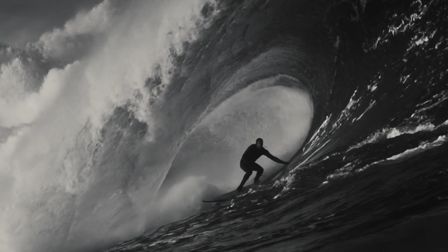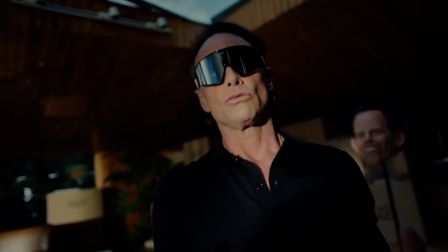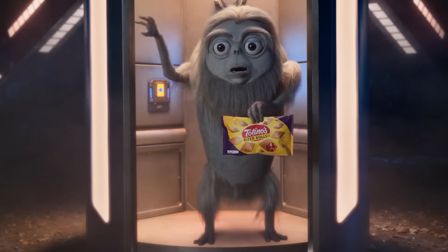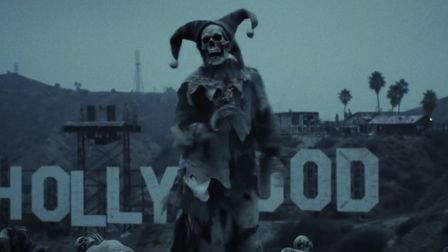Finger On The Pulse
We chat to Sarah Boardman of Pulse Films about her unique initiative for finding the next exciting new talent.
The hunt for the 'next big thing' in the industry has always been rife. However, while filmmaking becomes both increasingly experimental and accessible, and the pool of new directors seems ever expanding, companies have noticably found it harder to keep up with the waves of new work. Awards and initiatives such as the Saatchi&Saatchi New Directors Showcase, Radar Music, and Source's very own Scout section are some crucial ways you can keep up with the buzz, although companies have progressively decided to take it on themselves to do the sniffing out. With this in mind (along with Source's dedication to promoting new talent) we were delighted to hear about Pulse Films' fledgling initiative to find and promote new directors, potentially even before they've decided on a directing career!
The initiative is the brainchild of Sarah Boardman, Head of Music Videos at Pulse Films in London, and has the express aim of finding the new talent before anyone else does. The set up is simple but effective - leveraging Pulse's strong connection to the music industry and it's willingness to push boundaries, they connect students from a variety of film and visual arts disciplines to the music industry and ask them to respond creatively to the music. With the definition of music videos becoming increasingly vague (think OK Go) it seems an appropriate medium for fledgling creatives to sink their teeth into and let loose. Each installment will see a different university or institition set it's members the challenge of responding to a brief, with Pulse on the scene to mentor the creatives from the beginning and introduce them to the industry. The result is a win-win situation and one that we greatly admire!
After popping over to the inaugral exhibition by students from Central St Martins and checking out their various brilliant responses to the lastest album by London-based band Metronomy, we decided to get in touch with Sarah and find out more about the driving force behind this initiative and how it feels guiding fledgling filmmakers through their first steps into the industry.
We love the idea of connecting art/film students and record labels through such a renowned and creative production company like Pulse. Can you tell us a bit more about what this initiative is and where the idea came from?
Quite simply we wanted to find more new talent at Pulse, and the most logical place to look was universities and young filmmaker schemes. One of my old assistants was a student at Central St Martins (CSM), so he put me in touch with Esteban who is one of the course leaders there. I had approached record label Because Music first as they have a very creative output in terms of their visuals, and almost by fate, the head of the label Jane Third said that Joe from Metronomy had just mentioned to her that he wanted to use students for the visuals for his new album; It worked out perfectly timing wise.
How exactly does it work and what is Pulse’s involvement in the process, in terms of both the workshops and everything else?
We are involved in 2 ways: Firstly, by creatively briefing the students and then by educating them on the in’s and out’s, do’s and don’ts of making music videos in the real world; Basically making a mini APA masterclass for music videos. In the briefing session we had various HODs in to explain to the students what their role is within the music video process – from the band manager, to the head of marketing at the label, to myself as Executive Producer, Rik Green as music video producer, etc. Jane, Rik and I were then present at every feedback session, discussing the creative with the students as they progressed, right through to production and completion.
For our next round we want to make the masterclass more in depth, for example having a treatment writing session with Pulse’s research and creative department, a post-production session with one of our regular post houses, etc.
What was the brief, if any, and did you leave it fairly open to interpretation?
Jane, Esteban and I set “the brief”; ‘The Retro Future of Music Videos’ was to create a new kind of immersive and/or interactive music video experience. But aside from that it was all fairly open – the students were encouraged to experiment with different lengths of the track, different stems, different platforms and formats, Snapchat, Twitter etc – so not to be restricted by the standard 3m30 YouTube brief. We wanted them to think about the future.
How many students was it open to and how many did you select for the final pieces?
We opened it up to all different years and courses at CSM – we had 200 students come down to the briefing, of that about 70 pitched, and we had 20 finalists for the exhibition. Initally we were going to choose just one idea for one track, but so many great ideas came back that we decided to open it up all the album tracks and as many ideas as possible.
What were you looking for and was it hard whittling it down from the original submissions?
In all honesty it was pretty easy to whittle it down because we decided to let every killer idea through to the final exhibition – and the final selections were so great, it made the process enjoyably easy.
Bizarrely quite a few of the initial ideas were reminiscent of the music videos I grew up watching (Gondy, Cunningham etc). That really threw me, as the students were ten years younger and had never seen any of these videos, but their ideas were so similar. So we did have to let some of the students down as their ideas had already been made – we were really only looking for things we hadn’t seen before, completely new ideas.
The ideas that made it through were the ones that really pushed the medium, we actually only had 2 ‘traditional’ music videos. The rest were more like pieces of art!
Is this initiative primarily about finding new talent or is it a broader ways of helping young creatives get into the industry?
It’s two fold: We need them and they need us! And I think a lot of new filmmakers don’t understand a production company’s role and how vital it is to their success, so hopefully we’ve sped this process up for them.
You’ve commissioned pieces not just from film students but from a wide spectrum of designers and visual artists. Were you hoping for very varied response?
Yes, we wanted to push the medium and let different types of creatives interpret the album in different, more pure ways and away from the classic briefing format. It was totally refreshing.
The responses by the CSM students clearly go beyond the typical music video. Are you looking for new, out-of-the box ways of thinking?
Absolutely. Every art form has to embrace new thinking, including music videos – which many people immediately think “can only be traditional”. Directors and creatives are constantly breaking the rules in art, long form film, music etc – so we wanted to encourage the same attitude for music videos.
How useful or inspiring do you find these different approaches to the music video genre, and do you feel that in general it’s an evolving field of filmmaking?
I find it extremely useful and inspiring. I’ve been in the music video world for quite while but I always want to see future forward ideas. Embracing new technologies is exciting to me, as well as playing with different time structures, innovating new formats etc. But more often than not, it becomes difficult to encourage that level of creativity within the rigid traditional practices of record labels. But with the CSM students we could do whatever we wanted and because of that we saw some really great ideas. For example, one student group made a piece of art which reacted in real time to specific lyrics of the song (sex, money etc) when these words were mentioned on twitter it triggered the pieces to come alive and move. It was so simple, but yet effective.
What sort of feedback did you get from the students, the label and Metronomy?
The feedback from the students has been amazing. They’re excited to have been a part of a real project, with a huge band and to have earned real-life experience from people within the industry. I think it also helped give them a fuller sense of what goes into making work for a client (band, label, production company etc).
Likewise the label were ecstatic with the final pieces of work. Along with Joe from Metronomy, they were so open and inclusive with the students, which really helped give them the confidence they needed to go and create work that would blow us all away.
Finally, what are your plans for this initiative in the future and are you hoping to grow it?
We’re already working on the next one, which is pretty exciting. Our main goal is to link young talent organisations and schemes, with globally leading record labels and artists. We want to offer a much-needed platform and outlet for young creatives who want to work in music videos.













 Membership
Membership



